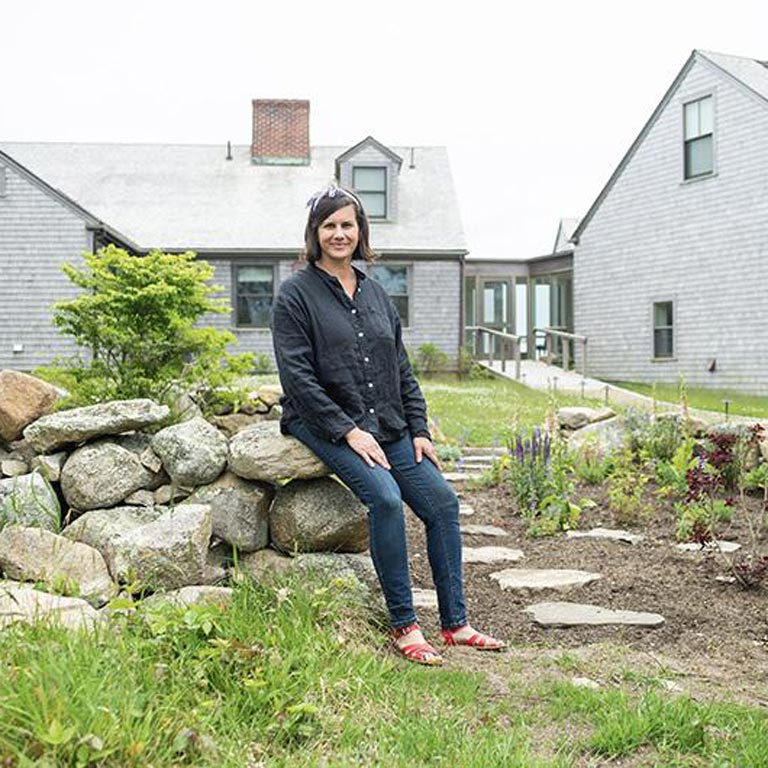Source: The Vineyard Gazette
It is a BYOS event — Bring Your Own Shovel.
On Saturday evening at sunset artist Carissa Carman will create a temporary art installation on Menemsha Beach, using the sand, the few bits of material she has brought with her from Indiana, and whatever else comes up in the process. Such is the shifting and ephemeral nature of public art that the final result is both fleeting and not completely preordained.
“I am building a sandcastle and an outrageous beach blanket, a three-dimensional quilt using the sand as my armature,” she said. “It’s a little bit absurd, slightly erratic and curious.”
Ms. Carman is a professor of fabrics at Indiana University and this is her first visit to the Vineyard. She arrived last week and was immediately steeped in a part of the Island’s artistic and intellectual history, staying at the former house of Max and Yvette Eastman.
Mr. Eastman was a prominent writer, editor and political activist, the author of over 20 books, a patron of the Harlem Renaissance, champion of women’s rights, and longtime seasonal resident of the Vineyard. He died in 1969.
Ms. Eastman was a writer, artist and photographer whose circle of friends included many other writers and artists. When she died in 2014 she bequeathed the Vineyard house to Indiana University, to continue its legacy as an artist retreat. The university’s connection to Mr. Eastman started in the 1950s, Ms. Carmen said, when it began to acquire his vast collection of writing and unpublished archives.
This is the first summer that members of Indiana University’s faculty will use the house as a retreat.
“It will be a place to expand our creative research,” Ms. Carman said. “To create in the spirit of Max Eastman, to explore and to have radical thoughts.”
Ms. Carman is no stranger to arriving in places new to her and allowing the landscape and culture lead her creative process. In 2012 she was asked to create a piece for the Havana, Cuba architecture biennial.
“The logistics of getting materials to Cuba were too hard and so I realized I needed to make my work so portable it only required myself,” she said.
She spent the next 20 days walking backwards for two hours a day in the San Augustin section of Havana.
“It was not meant to be in our face,” she said. “It was an honoring of the space I was in.”
The reactions from residents varied, Ms. Carman said, with many assuming she was making a political statement about the government. Others thought she was responding to an answered prayer.
“Children began following me, police too,” she said. “People asked me to walk backwards into their homes.”
On the Vineyard, Ms. Carmen said she also wants to honor the space. She has spent the last week talking to artists and organizations here to get a feel for the Island.
“When I come to a new place I land wherever I am to see what my parameters are and work within those parameters,” she said. “I know that the cultural climate of Menemsha at sunset has a lot of bustle. I don’t want this to be a radical spectacle but more of a curious gesture.”
Once again she has traveled with minimal materials.
“I have my entire studio in my suitcase. A portable sewing machine, sailing cloth, some thread, two sewing scissors and a Sharpie.”
The colors of the quilt are that of national safety hazard symbols and will sink into the shape of the sand, she said.
“The true audience are those that are from afar,” she added. “The Earth is the gallery, the sky the audience, along with the birds and boats.”
And then it will disappear.
The artistic happening takes place from 6 to 8 p.m. on Saturday, June 4 at Menemsha Beach.


